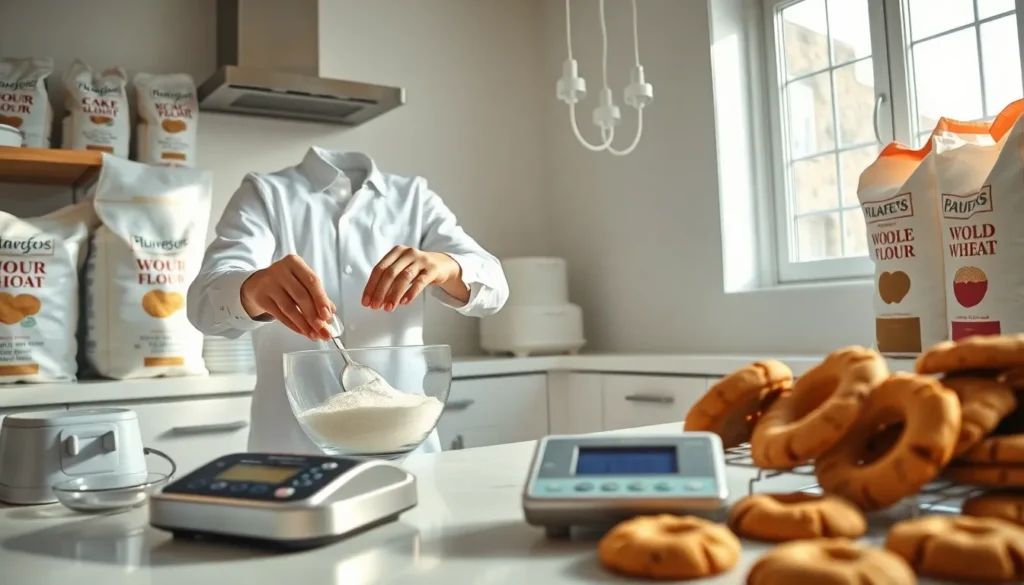Table of Contents
ToggleImagine biting into a cookie that’s so good, it makes you question your existence. That cookie, my friend, starts with the right flour. Choosing the right flour is like picking the perfect partner: it can make all the difference in your baking adventures. In this guide, we will explore how flour can bring your cookie dreams to life, because life is too short for subpar cookies. Let’s immerse and unlock the secrets of flour archives for cookies filled with love and flavor.
The Importance of Choosing the Right Flour

Flour serves as the foundation of any cookie recipe, and its selection is crucial. Different flours yield different results depending on their protein content.
Different Types of Flour and Their Uses
All-purpose flour is versatile, suitable for most cookie recipes. But, using specialty flours can elevate your baking. For instance, cake flour is lower in protein, giving cookies a softer texture, whereas bread flour has higher protein content for a chewier bite. Whole wheat flour can add depth and nutty flavors, making cookies richer.
How Flour Affects Cookie Texture and Flavor
The protein content in flour influences texture and spread. Lower-protein flours create softer cookies, while higher-protein varieties lend themselves to a chewy, substantial cookie. Hence, knowing your flour means knowing your cookie’s destiny. Think of it as a culinary matchmaking process, ensuring harmony in flavor and texture.
Tips for Selecting Flour for Cookie Recipes
Finding the right flour can feel like a treasure hunt, but the rewards are delicious.
Understanding Gluten Content
Different flours bring various gluten levels to the table. Gluten is the protein that gives cookies their structure and chew. If you desire a light, fluffy texture, opt for low-gluten flours. On the other hand, if you want that delightful chewiness, higher-gluten alternatives are the way to go. Always check the flour label: understanding gluten will be your cookie-making compass.
Experimenting with Flour Blends
Consider blending flours for a unique twist. Combining all-purpose flour with almond or oat flour can introduce new flavors and textures. This experimentation is a chance to create something special while tailoring your cookies to personal preferences.
Essential Cookie Techniques for Flour Success
Selecting the right flour is just the beginning: mastering its use is where the real magic happens.
Measuring Flour Accurately
Precision in measuring flour is essential. Spoon flour into your measuring cup, then level it off–too much flour can lead to dry cookies. A scale can be your best friend in achieving consistency in measurements, ensuring that each batch is just as delightful as the last.
Proper Mixing Methods for Cookie Dough
Mixing techniques matter significantly. Overmixing can develop excess gluten, resulting in dense, tough cookies. Instead, gently mix until just combined, allowing cookies to retain that tender, melt-in-your-mouth quality. This is where you get to channel your inner baking artist, you want to create magic, not chaos.
Storage and Shelf Life of Flour
Even the best flour needs proper care. Knowing how to store your flour can keep it fresh longer.
Best Practices for Flour Storage
Store flour in a cool, dry place in an airtight container to avoid moisture and pests. Keeping it sealed will also shield it from absorbing odors from other ingredients. If you often purchase in bulk, consider using the freezer to prolong shelf life. Just be sure to bring it back to room temperature before measuring for baking.
When to Discard Old Flour
Flour does have an expiration date, and using old flour can lead to unsatisfactory results. If it smells off or has a strange color, it’s best to let it go. A general rule of thumb is to use flour within a year for peak freshness. Stay vigilant: your cookies deserve the best.

